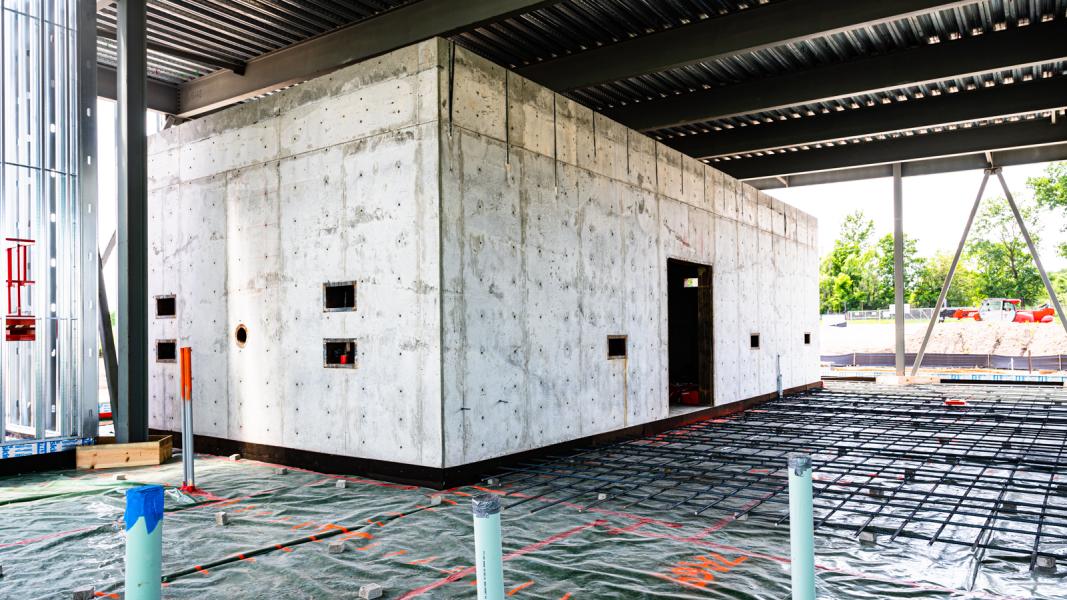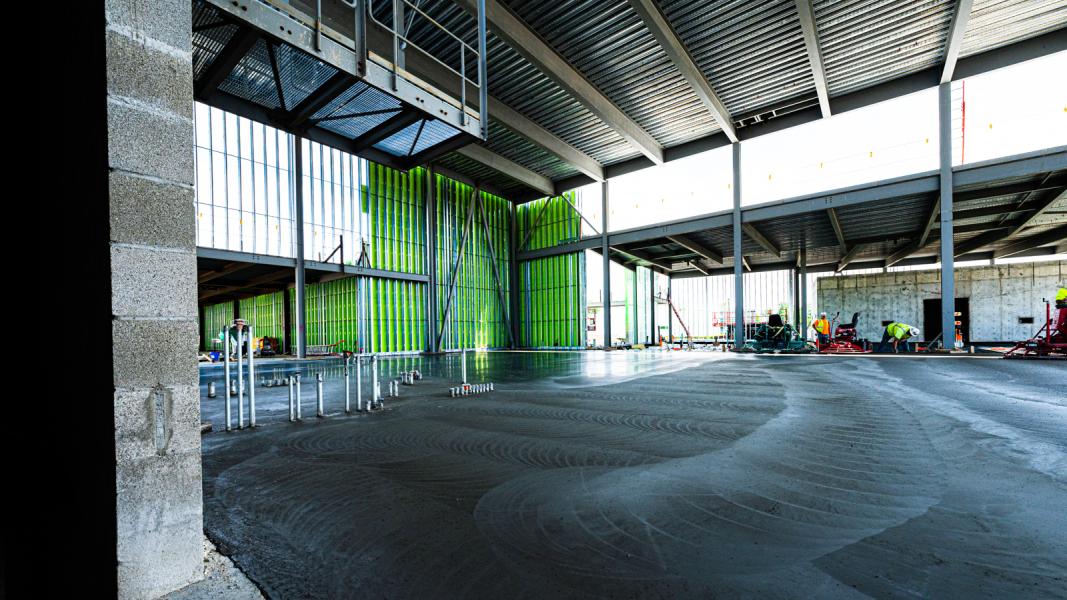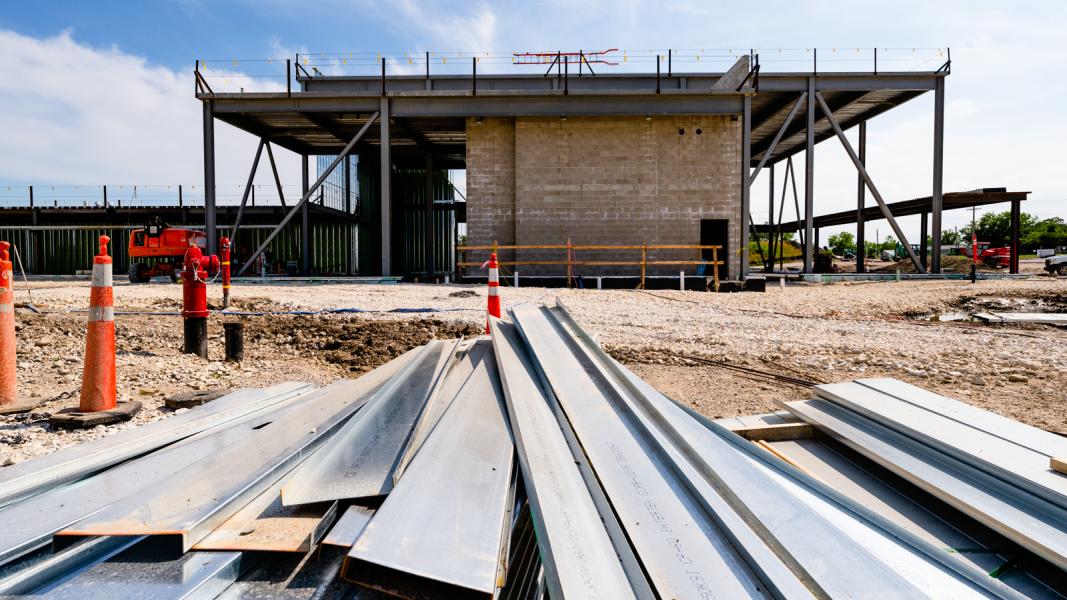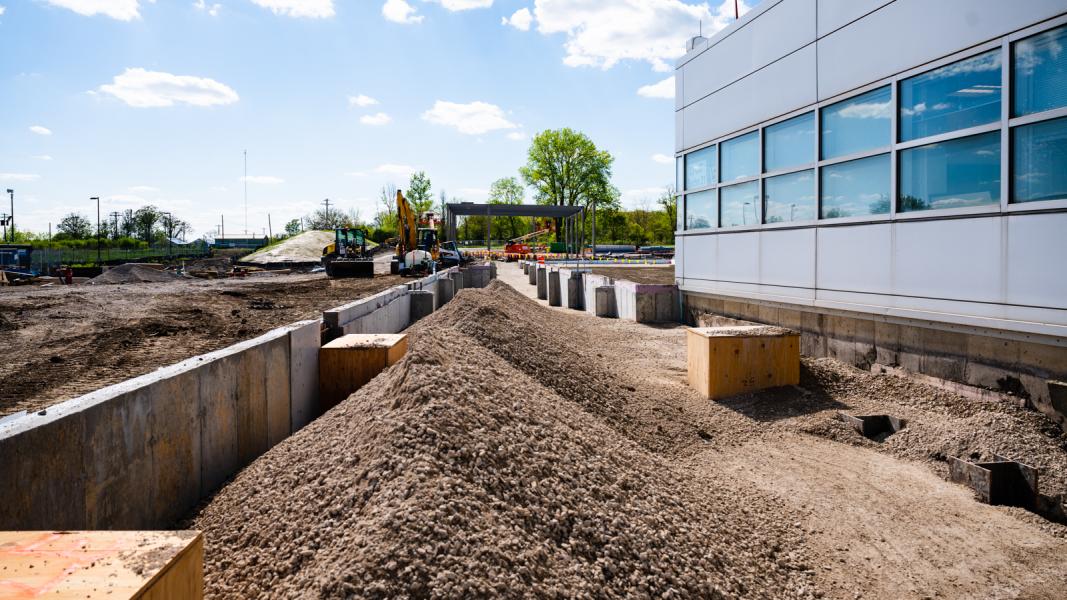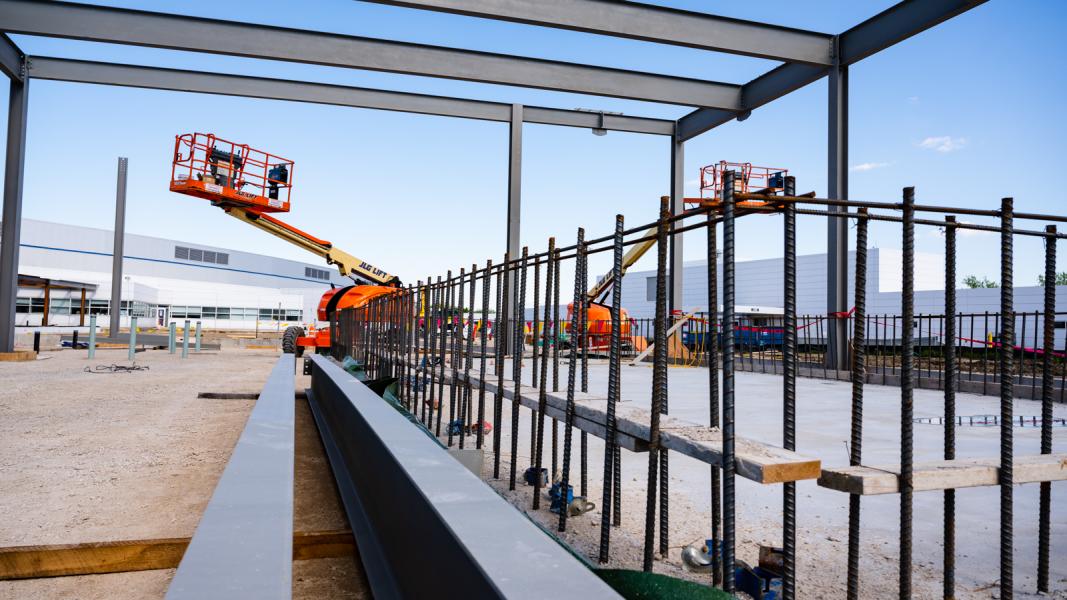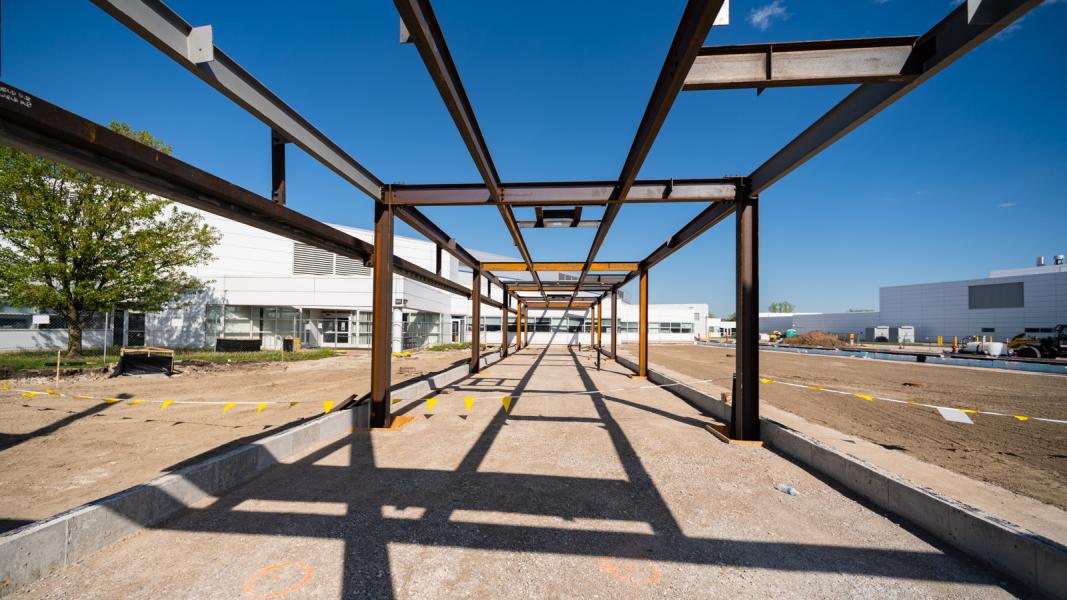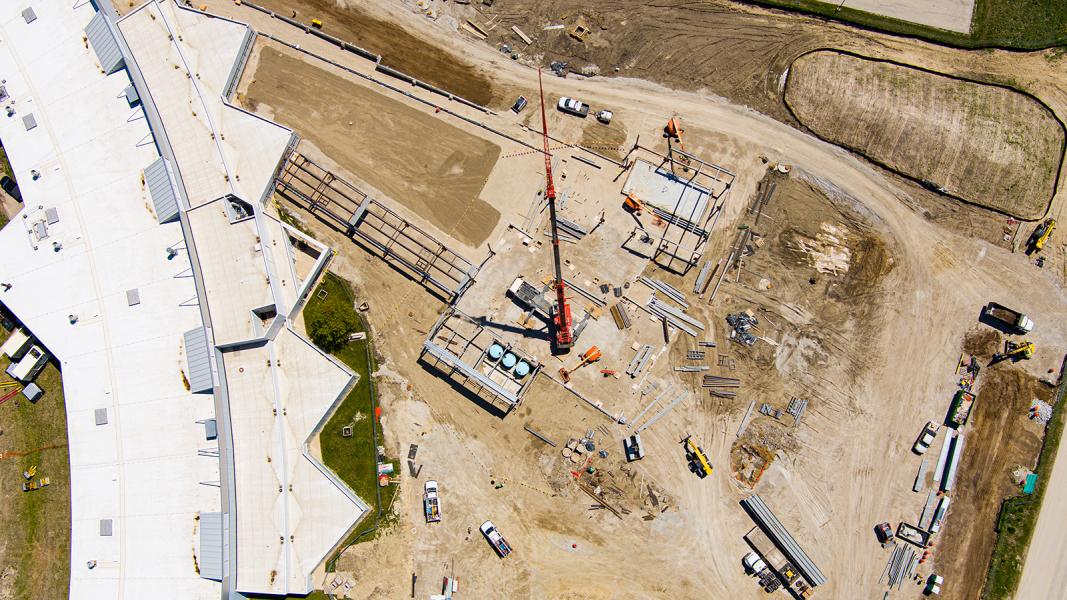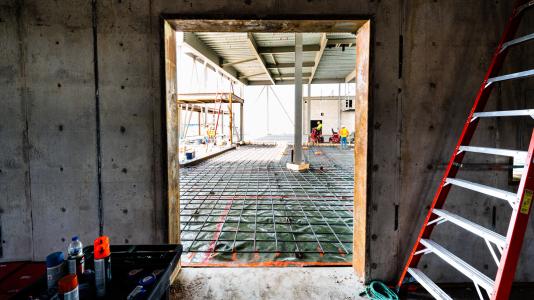
The Advanced Photon Source (APS) is one of the world’s top X-ray light sources, and a massive upgrade in progress will enhance its capabilities even more. When the APS Upgrade is finished, the facility will generate X-rays that are up to 500 times brighter than the already incredibly bright ones it produces now, opening the door to scientific discovery on a scale we have yet to imagine.
But from the outside, the APS — a U.S. Department of Energy (DOE) Office of Science User Facility at DOE’s Argonne National Laboratory — won’t look much different. The APS Upgrade will replace the inner workings of the machine — an electron storage ring made up of more than a thousand powerful magnets — with a state-of-the-art model, but that work will mainly take place inside the facility.
The most visible sign that the upgrade is proceeding is the Long Beamline Building (LBB), home to two of the stations where researchers will carry out cutting-edge science experiments using the brighter X-ray beams. Construction of this new building has progressed ahead of schedule since its groundbreaking ceremony on July 22, 2020, and is on track for completion in June 2022.
The LBB will house experiment stations for two new beamlines at the upgraded APS: the In-Situ Nanoprobe (ISN) and the High Energy X-Ray Microscope (HEXM). ISN will enable experiments on larger samples under a variety of conditions, allowing scientists to watch batteries as they charge and discharge, for example. HEXM will use high-energy beams to see into thicker samples and help scientists create more durable materials for airplane engines and solar cells, to name two.
The LBB will also host a unique Activated Materials Laboratory (AML) capable of safely preparing and disposing of activated materials used in experiments conducted in the neighboring HEXM facility.
Because there is such noticeable progress above ground at the LBB site, it is easy to overlook how much has happened below the surface over the past year. To make the area structurally suitable for the building, the construction crew excavated earth nearly 20 feet deep. They removed all unsuitable soils and backfilled the area with lean concrete, which provides a uniform surface. Beneath the AML, they built a basement to house the special retention tanks that will connect to the AML lab floor drains.
The construction crew also poured customized floors uniquely suited to the experiments done in each facility, to limit even the tiniest vibrations that can disrupt these analyses. For example, instead of standard thickness (six- to eight-inch) concrete floor slabs, the floor slab beneath the HEXM enclosure is 12 inches thick, similar to that of the APS. In addition, the concrete floor slab beneath the ISN enclosure is 39 inches thick in order to achieve highly-sensitive vibration design criteria. The ISN’s doors, cable openings and pipe openings will be lead-lined and reinforced, with an airlock around the door leading to a control room and preparation area.
In all the buildings, lean concrete subgrade fill and thicker floor slabs provide needed structural and thermal support. The whole ISN enclosure floor slab is completely isolated from the neighboring floor to minimize vibrations.
After construction is completed, the Upgrade project will take occupancy of the building, which will allow for installing the beamline equipment. The new beamlines will provide a one-of-a-kind space for Argonne’s future scientific discoveries.
About the Advanced Photon Source
The U. S. Department of Energy Office of Science’s Advanced Photon Source (APS) at Argonne National Laboratory is one of the world’s most productive X-ray light source facilities. The APS provides high-brightness X-ray beams to a diverse community of researchers in materials science, chemistry, condensed matter physics, the life and environmental sciences, and applied research. These X-rays are ideally suited for explorations of materials and biological structures; elemental distribution; chemical, magnetic, electronic states; and a wide range of technologically important engineering systems from batteries to fuel injector sprays, all of which are the foundations of our nation’s economic, technological, and physical well-being. Each year, more than 5,000 researchers use the APS to produce over 2,000 publications detailing impactful discoveries, and solve more vital biological protein structures than users of any other X-ray light source research facility. APS scientists and engineers innovate technology that is at the heart of advancing accelerator and light-source operations. This includes the insertion devices that produce extreme-brightness X-rays prized by researchers, lenses that focus the X-rays down to a few nanometers, instrumentation that maximizes the way the X-rays interact with samples being studied, and software that gathers and manages the massive quantity of data resulting from discovery research at the APS.
This research used resources of the Advanced Photon Source, a U.S. DOE Office of Science User Facility operated for the DOE Office of Science by Argonne National Laboratory under Contract No. DE-AC02-06CH11357.
Argonne National Laboratory seeks solutions to pressing national problems in science and technology. The nation’s first national laboratory, Argonne conducts leading-edge basic and applied scientific research in virtually every scientific discipline. Argonne researchers work closely with researchers from hundreds of companies, universities, and federal, state and municipal agencies to help them solve their specific problems, advance America’s scientific leadership and prepare the nation for a better future. With employees from more than 60 nations, Argonne is managed by UChicago Argonne, LLC for the U.S. Department of Energy’s Office of Science.
The U.S. Department of Energy’s Office of Science is the single largest supporter of basic research in the physical sciences in the United States and is working to address some of the most pressing challenges of our time. For more information, visit https://energy.gov/science.
Image Gallery -- (Images by Jason Creps/Argonne National Laboratory.)
